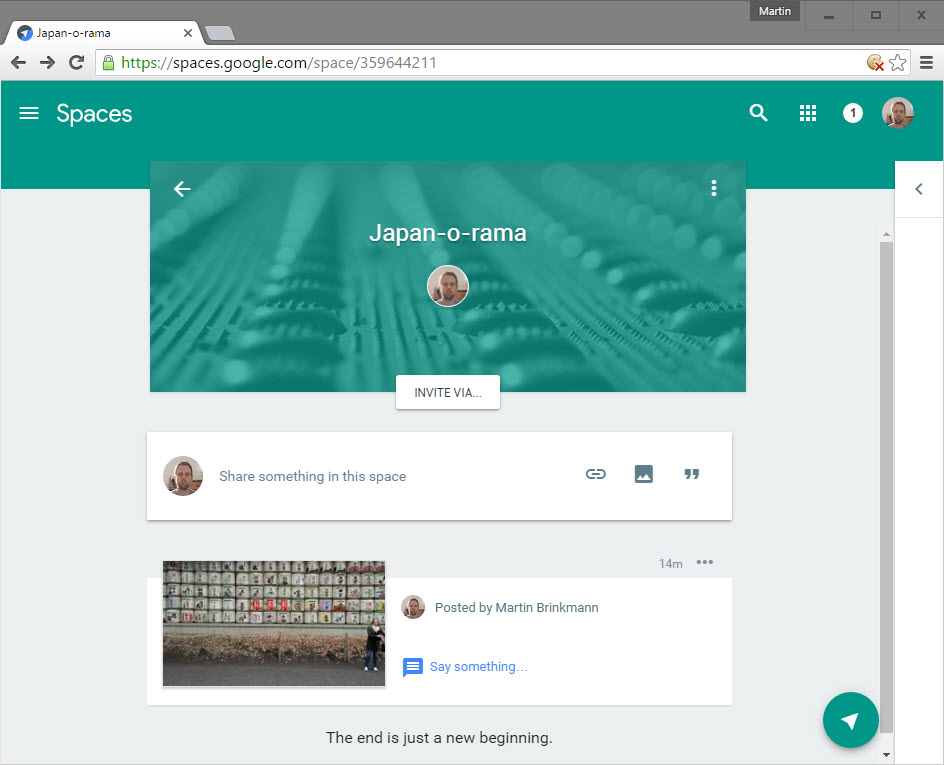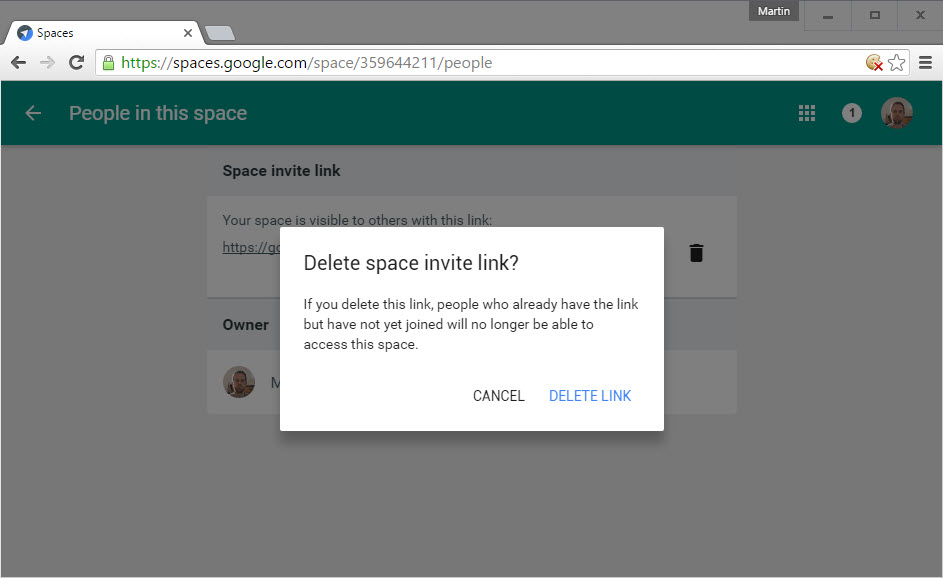Google Spaces: yet another messaging product
Google Spaces was announced yesterday by Google as a way for groups to quickly share text, videos, images or links.
Designed to make group sharing easier, Google Spaces lets you create groups based and send out invitations to other users using links, email or and other sharing options that depend largely on the platform you are using Spaces on.
If you are using the web version, all you get on top of what is already been mentioned is Facebook, while Android users get myriads of options to invite others to the new space they have just created.
Note: Google Apps customers cannot use Spaces currently.
A group for your weekly boardgame get-together? One for the football team? Another for a study group at college?
Google Spaces

Google Spaces is available as a web service and in form of native applications for Android and iOS. The web version is rather limited in terms of sharing content directly as Google has not integrated YouTube or Google Search capabilities as it has done in the applications.
Each space is independent from all the others that you have created yourself or joined and others don't know about the spaces that you are a member of.
Customization options are fairly limited right now and seem to have been taken directly from Google Plus. You can change the header graphic, change colors, and add a name to a space, but that is about it.
You can post messages to the group, share videos, images and other links, or post comments to something that someone else shared previously.
Access to Spaces is not protected and the only security that prevents uninvited users from accessing a Space is a random invite string.
While it is a long sequence of upper and lower case characters and numbers, it is the only thing that is keeping uninvited people from accessing a space.
The only option you have to prevent that from happening is to delete the invite link on the people page on Google Spaces.

Doing so prevents anyone who has not joined yet from accessing the group using the link. You may create a new link at anytime which is handy if you want to invite new members to the group.
Posting and sharing is quick, and there is a built-in search that you can use to find information and filter by links, photos or videos in all spaces that you are a member of.
Probably the most interesting feature of Spaces is one that is not yet available. Google plans to push Spaces at the Google I/O 2016 conference by using physical beacons in sessions that point to spaces so that attendees get invites to these groups automatically.
Google Spaces is part Google Plus and part Wave, and quite confusing when it comes to use cases if you are already using other Google messaging products.
Google Plus supports open and private groups (called communities) for instance that you can create or join. There you can then post messages, images, videos and links, and comment on these.
If you look beyond Google's ecosystem, you will find Facebook Groups, groups in WhatsApp and other messaging services, Slack, and myriads of other services that offer similar functionality.
I'm not saying that Google Spaces will fail and be terminated by Google once the company realizes that barely anyone uses it, but unless Google starts to add features to the service it is not really something that many users will be interested in.
Now You: What's your take on Google Spaces?
This article was first seen on ComTek's "TekBits" Technology News

- Log in to post comments